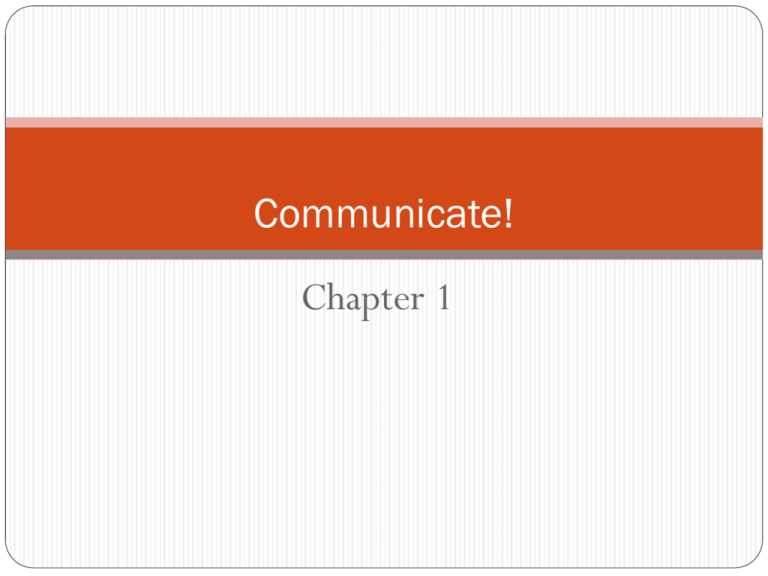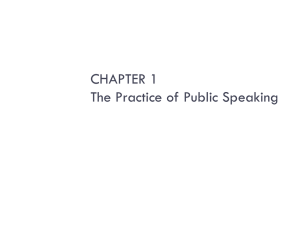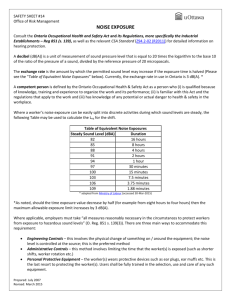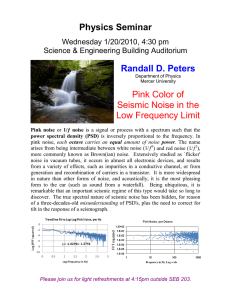Human Communication: What and Wny
advertisement

Communicate! Chapter 1 Why Study Communication? Practical Needs / Work Place Employers seek communication skills, team work skills, and interpersonal abilities. It’s the number one skills sought. (Hansen & Hansen, 2007;Young, 2003; Koncz, 2008) In Engineering, speaking skills were important to 72% of employers surveyed (Darling & Dannels, 2003) Identity Needs Communication is the way we learn who we are ( see Chapter 2) Why Study Communication? cont. Physical needs Fredrick II, emperor of Germany from 1196 to 1250 illustrated the importance of communication (Ross and McLaughlin) Five people are isolated and remain alone in a locked room (Schachter, 1959) John McCain talked about 6 years of solitary confinement (McCain) Russian Experiment to Mars? Locked away for 520 days? http://news.bbc.co.uk/2/hi/europe/7966731.stm http://www.cbc.ca/technology/story/2010/06/02/russia-mars-experiment-travel.html?ref=rss http://news.bbc.co.uk/2/hi/europe/8150385.stm Why Study Communication? cont. Physical needs People who lack strong relationships have 2-3 times the risk of early death. (Duck, 1992) Divorced, separated, widowed people are 5-10 times more likely to be hospitalized for mental illness (Duck, 1992) Social isolation similar to cigarette smoking, obesity, lack of exercise, and diet?????? People who are socially isolated are 4 times more likely to get the common cold (Cohen, Doyle, Skoner, Rabin, Gwaltney, 1997) (as well as The Journal of the American Medical Association) Definition of Communication: What examples come to mind when you think of the term “communication”? Adler and Rodman’s definition of communication: “The process of creating meaning through symbolic interaction.” Verderber, Verderber, and Sellnow’s definition of communication: “The process of creating or sharing meaning in informal conversations, group interaction, or public speaking.” My definition of communication: “The process of creating and/or sharing intentional and/or unintentional meaning through nonverbal and verbal messages in informal conversation, group interaction, or public speaking.” The Elements of the Communication process: Participants Encoder Decoder Message messages are created (encoded and decoded) by symbols to which meaning is assigned. Context Physical context, social context, historical context, psychological context, cultural context Channel Interference (Noise) Physical noise, Psychological noise, Semantic noise Feedback The Communication Process (the transactional model of communication) Communication Settings/ Communication Contexts: Qualitative vs. Quantitative Intrapersonal communication Interpersonal communication (dyadic?) Small group communication Public communication Mass communication Communication Principles: Communication has purpose Communication is continuous Communication messages vary in conscious thought Communication is relational Once cannot be attractive without others who are attracted? One cannot be a leader unless others are willing to follow? Quality of interaction between parent and child is a two-way street (Dainton, Stafford, 1993). Communication is guided by culture Communication has ethical implications Communication is learned After 30 minutes of instruction, participants became significantly more effective in detecting lies (DeTurch, Miller, 1990) Communication Competence Effective (when it achieves it’s goals) Appropriate (when it conforms to the situation) Characteristics of Competent Communicators A wide range of behaviors Ability to choose the most appropriate behavior Skill at performing behaviors Perspective taking Cognitive Complexity Self-Monitoring Commitment to the Relationship











